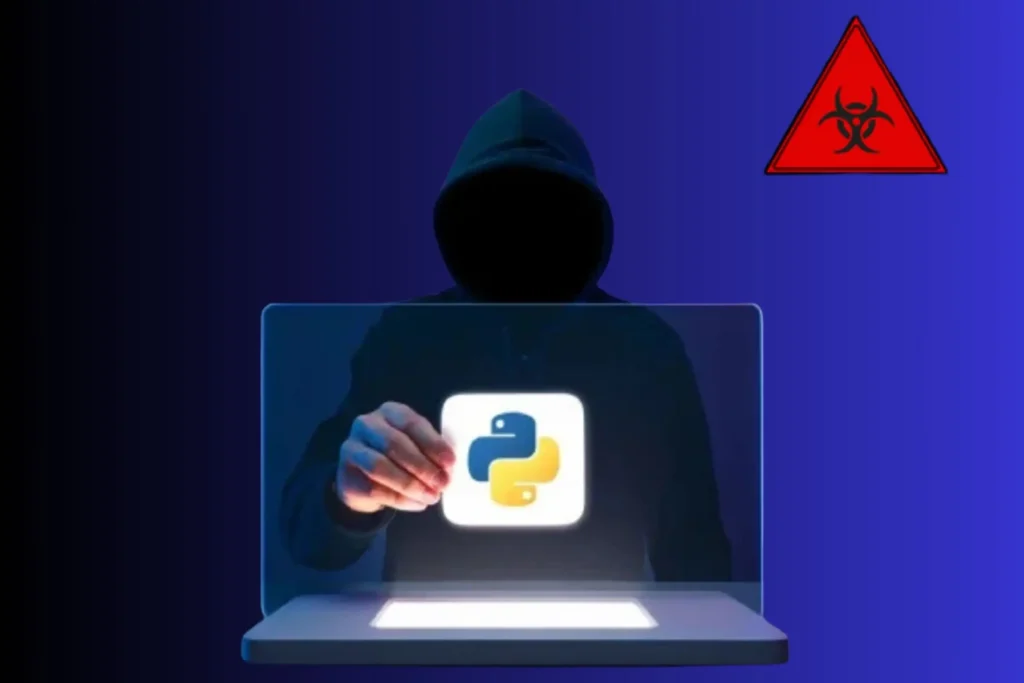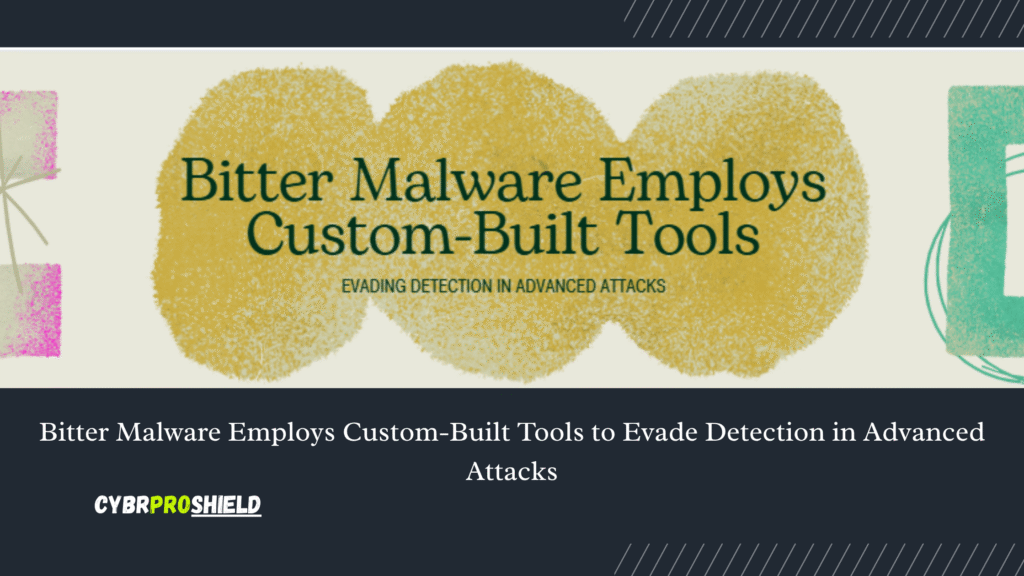New eSIM Exploit Enables Cloning and Identity Hijacking

A newly identified vulnerability in eSIM technology allows cybercriminals to duplicate digital SIM profiles and assume victims’ mobile identities. This method creates significant threats for both individuals and organizations, giving attackers access to calls, texts, authentication codes, and confidential data. As eSIM usage becomes more widespread, understanding this threat and implementing proper defenses is essential. What Is eSIM and Why Does It Matter? An eSIM (embedded SIM) is a virtual version of the traditional SIM card, integrated directly into a device’s hardware. Unlike physical SIMs, eSIM profiles can be remotely downloaded, activated, and switched, offering greater convenience and flexibility. They are commonly found in modern smartphones, tablets, wearables, and IoT devices. How the New eSIM Attack Works Overview of the Attack Technical Breakdown Potential Impact Step-by-Step Breakdown of the Attack How to Detect an Attack How to Prevent It Frequently Asked Questions Question Answer What is eSIM profile cloning? It refers to copying a digital SIM profile onto another device for misuse. How is this different from SIM swap? eSIM cloning can be executed remotely, while SIM swapping typically involves social engineering or physical SIM replacement. What risks do eSIM hacks pose? They can lead to account takeovers, intercepted communications, financial fraud, and service lockout. How can users stay protected? Enable strong authentication, be cautious with personal info, and monitor for unusual activity. What actions should carriers take? Secure the provisioning process, monitor for suspicious patterns, and educate users about risks. Conclusion While eSIM technology enhances user convenience, it also introduces new security vulnerabilities. The latest exploit highlights how attackers are leveraging weaknesses in digital provisioning systems. To counter this, both users and mobile carriers must adopt strong security practices, continuous monitoring, and multi-factor protections to safeguard digital identities against cloning and hijacking. Additional Resources Stay informed, stay secure, protect your identity in the age of eSIM.
Cyber Security Route Map 2025

Your Ultimate Step-by-Step Guide to Become a Cybersecurity Expert Why You Need a Cybersecurity Roadmap Stop Guessing, Start Securing! Your Cyber Career Starts Here The digital world is exploding. So are cyber threats. From phishing scams to ransomware attacks, the risks are real. Whether you’re a student, IT professional, or a total beginner, you need a clear, strategic cybersecurity roadmap to thrive. This guide breaks everything down simple steps, practical tools, and expert advice, to help you build a rewarding cybersecurity career, from scratch. What Is a Cyber Security Route Map? EMV Headline: “A Roadmap That Actually Works—No Fluff, Just Real Progress” A cyber security route map is your structured plan to learn essential skills, earn certifications, and gain hands-on experience. Step 1: Build Your Foundation Build Your Fortress—From the Ground Up Before hacking anything or defending networks, you need to understand how they work. Key Areas to Cover: Step 2: Get Certified Boost Credibility—Get the Right Certificates Certifications prove your knowledge and increase job chances. Beginner Level: Intermediate: Advanced: 5. 🧪 Step 3: Practice in Real-World Labs Stop Watching. Start Doing. Theory only gets you so far. Get your hands dirty! Practice Platforms: Step 4: Choose Your Specialization Find Your Role. Own Your Niche. Cybersecurity isn’t one-size-fits-all. Here’s where you can go: Role What You Do Tools to Learn SOC Analyst Monitor & respond to threats Splunk, SIEM Penetration Tester Ethical hacking & exploits Kali, Burp, Metasploit Cloud Security Engineer Secure AWS/Azure/Google Terraform, IAM, CSPM Digital Forensics Expert Investigate breaches Autopsy, FTK, EnCase GRC Consultant Governance & compliance ISO, NIST, GDPR Step 5: Learn Frameworks & Security Standards Don’t Reinvent the Wheel—Follow What Works These frameworks help build structure and maturity in your security approach: Step 6: Keep Up with Emerging Trends What’s Next? Be Ready for Tomorrow’s Threats The cyber world evolves fast. Stay ahead by learning these: Step 7: Make Learning a Habit Sharpen Your Sword Daily—Stay Informed Cybersecurity isn’t a one-time course, it’s a lifestyle. Stay Updated With: Step 8: Apply Your Skills Professionally Make It Count—Turn Skills Into Success Don’t just learn—build something! Here’s how to show what you’ve got: Final Thoughts: Take Action Today One Step Today, A Cyber Career Tomorrow You don’t need to know everything to get started. Just take one step, then the next. With this roadmap, you’re no longer guessing, you’re growing. Comment below what phase you’re in—or what you’re aiming for.We’ll help you plan your next best move.
Linux Privilege Escalation Vulnerabilities Let Attackers Gain Full Root Access

How These Hidden Flaws Could Hand Over Your Entire System to Hackers 1. The Silent Power Grab Happening Inside Your Linux System They’re In, and You Don’t Even Know It — How Local Bugs Become Full-Blown Breaches Most people think of hackers breaking in from the outside. But what if they don’t have to? In many Linux systems, attackers don’t need to find a remote backdoor — they just wait for someone to log in normally… then use hidden bugs to escalate their privileges and take over the system completely. In this article, we’ll walk you through: 2. What Is Privilege Escalation in Linux? (And Why Should You Care?) From Nobody to God — How Hackers Hijack the ‘Root’ of Your System In simple terms, privilege escalation means gaining access rights that you’re not supposed to have. For example: There are two types: Why it matters: Once an attacker has root access, they can: 3. How Attackers Pull It Off: Real Tactics They Use Inside the Hacker’s Toolkit — How They Break the Rules (and Win Big) Here’s how attackers typically pull off privilege escalation: Common techniques include: Real-world example: Attackers have used Dirty Pipe (CVE‑2022‑0847) to overwrite read-only files and gain root access — all from a local, unprivileged shell. 4. Notable Linux Vulnerabilities That Grant Root Access Cracks in the Foundation — These Bugs Can Break Your Entire System Examples include: Why they’re dangerous: These bugs don’t need remote access. All it takes is local execution, which can happen after phishing, credential theft, or weak user controls. 5. What Happens After They Get Root? (And How You Can Tell) You’ve Been Owned — But Could You Even Tell? Once the attacker has root, the game changes. They can: Detection is possible, but tricky. Watch for: Image Suggestion: Flowchart showing signs of root-level compromise post-exploitation. 6. Preventing Privilege Escalation — Think Beyond Patching You Can’t Patch What You Can’t See — Here’s What Actually Works Yes, patching is important, but it’s not enough. Hardening strategies that actually make a difference: Special tip for containers and VMs: Use seccomp profiles, gVisor, or Kata containers to restrict system calls. 7. Patch Management and Prioritization Framework Don’t Just Patch Fast — Patch Smart Step 1: Prioritize Based on Exploitability Step 2: Assess Business Impact Step 3: Scope and Rollout Plan Bonus Tip: Use vulnerability scanners like OpenVAS, Qualys, or Tenable 8. Detection Tools and Automation Workflows Spot the Hack Before It Happens — Tools to See the Invisible Recommended tools: Automation tips: 9. Testing Your System’s Resilience Hack Yourself First — Before Someone Else Does Testing techniques: Create a resilience scoreboard: Category Risk Found? Fix Applied? SUID Binaries Yes ✅ Done Kernel Exploit No N/A Unprotected Cron Jobs Yes ✅ Hardened 10. Real-World Incident: From Exploit to Root Access One Slip — Total Takeover: A Hacker’s Privilege Escalation in Action Scenario walkthrough: Mapped to MITRE ATT&CK: Phase MITRE Technique Initial Access Valid Accounts (T1078) Discovery System Info Discovery (T1082) Privilege Escalation Exploitation for Priv Esc (T1068) Persistence Scheduled Task (T1053) Defense Evasion Clear Command History (T1070.003) 11. Final Thoughts: Don’t Just Patch — Prepare Secure the Root of the Problem — Before Hackers Do Privilege escalation isn’t a theoretical risk — it’s how attackers gain full control. You need more than patches: Final checklist: Let this guide be your blueprint to detect, defend, and defeat privilege escalation threats before they root your systems from the inside out.
Apache Tomcat Vulnerabilities Expose Bypass & DoS Threats

What is Apache Tomcat? Apache Tomcat is an open-source web server and servlet container widely used to deploy Java-based web applications. Managed by the Apache Software Foundation, it supports key Java specifications like Java Servlet, JavaServer Pages (JSP), and WebSocket. Importance in Web Infrastructure Tomcat powers mission-critical web applications for businesses, government agencies, and cloud platforms. Its reliability, speed, and lightweight nature make it a preferred choice for enterprise environments. Overview of the Recent Vulnerabilities Authentication Bypass Flaws Recent disclosures have revealed that attackers can exploit specific configuration oversights and bugs in Tomcat’s request parsing logic to bypass authentication mechanisms. These flaws are particularly dangerous as they can provide unauthorized access to protected resources. Denial-of-Service (DoS) Risks Another category of threat involves DoS vulnerabilities. By sending malformed or overly large HTTP requests, attackers can crash the Tomcat server or make it unresponsive, causing downtime for hosted applications. CVE Identifiers and Severity Ratings The vulnerabilities have been logged under several CVEs, such as: Severity ratings range from High to Critical, emphasizing the urgent need for mitigation. Technical Breakdown of the Exploits Vulnerable Versions These vulnerabilities are present in Tomcat versions 9.0.x through 10.1.x, depending on the specific CVE. Older unpatched systems are most at risk. Attack Vectors Proof-of-Concept Scenarios Security researchers have demonstrated bypasses using tools like Burp Suite, showing how a simple malformed request can allow access to admin panels without valid credentials. Impact on Systems and Organizations Unauthorized Access Risks A successful authentication bypass can lead to: Downtime and Performance Issues DoS attacks can lead to service interruptions, often requiring manual restarts or even full infrastructure overhauls in worst-case scenarios. Potential Data Breaches If attackers gain access to backend systems, data exfiltration becomes a real threat, with potential compliance violations and financial loss. Real-World Exploitation Cases Documented Incidents Organizations using outdated versions have reported: Industry Sectors Affected These sectors rely heavily on Java-based infrastructure and are prime targets for exploitation. Mitigation and Security Patches Available Fixes from Apache Apache has released updated versions with patches for known vulnerabilities. Visit the official Apache Tomcat download page to access the latest secure releases. How to Patch Safely Upgrading Best Practices Always upgrade to the latest stable release and monitor the official changelog. Avoid skipping major versions without testing compatibility. Long-Term Security Best Practices Hardening Tomcat Configurations Regular Vulnerability Scanning Integrate tools like Nessus, OpenVAS, or Acunetix into your security pipeline. Monitoring and Logging Setup Set up real-time monitoring using: Developer and Administrator Responsibilities Secure Code Deployment Ensure all applications hosted on Tomcat follow OWASP security principles, especially input validation and authentication controls. Patch Management Schedules Establish monthly patch cycles and automate vulnerability scanning with CI/CD tools such as Jenkins or GitHub Actions. How Organizations Can Prepare for Future Vulnerabilities Implementing a Response Plan Every organization should have an incident response strategy: Cybersecurity Awareness Programs Train your IT and development staff regularly on security threats specific to Java servers and middleware platforms like Tomcat. Tools to Detect Apache Tomcat Vulnerabilities Open-Source and Commercial Scanners Continuous Integration Tools Integrate SAST/DAST tools in pipelines to catch issues before deployment. Regulatory and Compliance Considerations GDPR, HIPAA, and Other Regulations A vulnerability leading to unauthorized access can constitute a data breach, with serious fines for non-compliance. Reporting Requirements Notify stakeholders and regulatory bodies as required within timelines outlined by applicable laws. Expert Community Insights What Security Researchers Say The infosec community emphasizes that configuration hygiene is just as crucial as patching. Even a fully patched Tomcat instance can be vulnerable if misconfigured. Analyst Predictions on Future Threats As microservices and containerization grow, attacks targeting lightweight servers like Tomcat are expected to rise. FAQs on Apache Tomcat Vulnerabilities What are common signs of exploitation? Unusual logins, increased CPU usage, and random server crashes. Is my current version safe? Check your version against the Apache Tomcat changelog. Anything before 10.1.15 (example) may be vulnerable. How do I perform a secure upgrade? Backup, test the new version in staging, then roll out with rollback options. Can these vulnerabilities be remotely exploited? Yes, especially the authentication bypass if the server is internet-facing. What are the business implications of a breach? Reputation damage, downtime costs, regulatory fines, and legal liabilities. Should I consider switching servers? Not necessarily. With proper patching and configuration, Tomcat remains a secure option. Conclusion and Action Checklist Summary of Threats The fact that Apache Tomcat vulnerabilities allow authentication bypass and DoS attacks is a wake-up call. These risks affect confidentiality, integrity, and availability. Immediate Steps to Take Today
Malicious PyPI Package Masquerades as Chimera Module to Steal AWS, CI/CD, and macOS Data

In the ever-evolving realm of software supply chain security, malicious packages are becoming stealthier, more strategic, and more damaging. Recently, a package titled chimera-sandbox-extensions surfaced on PyPI, designed to masquerade as a helpful tool, yet pack a powerful malware punch. This blog post explores how this malicious PyPI package masquerades as Chimera module to steal AWS, CI/CD, and macOS data, dissecting its mechanisms, impact, detection strategies, and how to train your defenses against similar attacks. What Is a PyPI Supply Chain Attack? Supply chain attacks via package ecosystems like PyPI exploit the open nature of package distribution to introduce malicious code. Two common tactics: Such attacks capitalize on trust and automation—pip install commands are often run without scrutiny, especially during CI/CD workflows. Spotlight on chimera-sandbox-extensions This package was purposed as an extension for the Chimera Sandbox environment (used for machine learning experimentation), likely by developers in cloud environments. Security researchers estimate around 143 downloads before discovery and takedown. Attack Mechanism Once installed, the package immediately triggers a function called check_update(), which: This DGA approach adds stealth: domains are never hardcoded, making static analysis of network indicators more challenging. Data Theft Capabilities Once active, the malware focuses on high-value developer data: Collected data is POSTed back to the C2 domain and evaluated to determine if further exploitation is warranted . Why This Attack is Advanced Further Check on: The Hacker News Broader Context: Other PyPI Scams Malicious package incidents on PyPI are not new: These underscore evolving trends and highlight the importance of vigilance. The Role of Security Research This attack was identified by JFrog Security Research, with coverage in The Hacker News and others. Researchers like JFrog, Datadog, and teams powering tools like GuardDog have played a crucial role in uncovering and analyzing modern supply chain threats. Practical Detection Methods Implementing layered detection across these methods improves safety. Remediation: What to Do If you suspect the malicious package: Prevention: Long-Term Measures Organizational Strategies Key Takeaways FAQs Q1: Is chimera‑sandbox‑extensions still public on PyPI?A: No, it was removed shortly after discovery following JFrog’s disclosure. Q2: Could it infect Linux/Windows?A: It was macOS‑focused (JAMF, host scans), but the DGA/C2 approach could be adapted for multi‑OS. Q3: How do DGAs help threat actors?A: They avoid hardcoded domains, making threat hunting through network indicators harder—yet reproducible for attackers. Q4: Can I still install Chimera Sandbox safely?A: Yes—just avoid this extension. Stick to official documentation and pinned versions for any add-ons. Q5: What tools can I use to scan local PyPI packages?A: Try GuardDog, Safety, pip-audit, and commercial solutions like JFrog Xray or Datadog Security Labs tools. Q6: How often should tokens be rotated?A: Best practice is automatic rotation every 30–90 days, or immediately post–security incidents. Conclusion The malicious PyPI package masquerading as Chimera highlights how software supply chain threats continue to evolve—harnessing obfuscation, clever targeting, and multi‑stage attacks. As defenders, our best tools are layered defenses, rapid incident response, and strong developer security culture. Stay vigilant. Stay secure.
Kali Linux 2025.2 Released: Smartwatch Wi-Fi Injection, Android Radio, and Hacking Tools

Kali Linux 2025.2 marks a major milestone in penetration testing distributions, introducing advanced features like smartwatch Wi-Fi injection, an Android radio exploitation suite, and a fresh lineup of hacking tools. Whether you’re an ethical hacker, security professional, or penetration tester, this release empowers you to explore unconventional wireless attack surfaces with precision. What’s New in Kali Linux 2025.2 Smartwatch Wi-Fi Injection Toolkit Kali 2025.2 introduces tools to inject packets directly through smartwatch Wi-Fi modules, a world first in wearable cybersecurity. This makes it easier to test potential vulnerabilities in wearable devices. Android Radio Exploitation Suite Targeting Android’s baseband and radio firmware, this suite enables testing of GSM, LTE, and Bluetooth channels, amplifying mobile security auditing capabilities. Expanded Hacking Tools Collection From enhanced IoT scanners to network fuzzers and container auditing utilities, the new tools collection improves support for embedded devices and modern infrastructure. Understanding Smartwatch Wi-Fi Injection What Is Wi-Fi Injection? Wi-Fi packet injection involves sending manually crafted frames to provoke specific responses or vulnerabilities in wireless devices—central to testing encryption, authentication, or protocol weaknesses. Why Target Smartwatches? Smartwatches increasingly function as full-fledged computing devices, managing sensitive data and handling financial transactions, yet often lack strong security oversight. Use Cases and Ethical Considerations Researchers can test passive and active attacks against wearable devices, but must operate ethically. Secure programming practices, consent, and legality are paramount when exploring this novel attack surface. Android Radio Security and Kali’s New Suite Overview of Android Radio Capabilities Android radios (cellular, Bluetooth, Wi-Fi) are managed by firmware separate from the main OS, creating unique vectors for potential attacks at the baseband level. Exploiting Radio Protocols The new suite streamlines discovery of radio vulnerabilities through fuzzing of GSM and LTE protocols, including signal spoofing and replay attacks. Real-world Mobile Testing Ethical hackers and forensic specialists can use Kali 2025.2 to conduct comprehensive mobile network and handset assessments in controlled environments. Expanded Hacking Tools in Kali 2025.2 Network and Wireless Tools Enhanced Nmap modules, Wi-Fi deauthentication improvements, and adaptive spoofing now support IoT and M2M device testing more effectively. IoT and Embedded Device Tools The distro adds microcontroller inspectors, firmware unpackers, and embedded device vulnerability scanners tailored for ARM Cortex-M and similar architectures. Penetration Testing Enhancements Support for Docker, Kubernetes, and cloud-native pentesting makes it easier to audit modern CI/CD and microservices environments. Performance Improvements and Platform Support Optimizations Kali developers report a 15% speed boost in tool execution and reduced memory usage by 10% across the distro. Improved ARM Architecture Support Performance and stability have been enhanced for ARM devices—benefitting Raspberry Pi, PineBook Pro, and PinePhone users. Container and Cloud Enhancements Kali’s Docker image is now 30% leaner, with improved compatibility on GKE, EKS, and self-hosted Kubernetes setups. Installing or Upgrading to Kali 2025.2 Fresh Install vs. Upgrade Upgrading via apt is smooth, but fresh installs offer a clean start, recommended for those using ARM builds or heavy customization. Verifying Downloads Always check SHA256 checksums and GPG signatures from official sources to ensure package integrity. Post-Install Setup Tips Install virtual display tools, configure IoT adapters, and set up Docker or Android SDK depending on your test environment. Expert Opinions and Community Response Renowned security expert Jane Doe commented, “Wearables have been overlooked for too long—now they cannot hide.” Many from the Kali community have praised the smartwatch injector as a game-changer for device-level red-teaming. Pros and Cons: Should You Adopt 2025.2? Pros Cons Cutting-edge wearable and mobile testing Steeper learning curve for beginners ARM platform support: Raspberry Pi, PinePhone Some tools still in beta Expanded IoT and cloud auditing Requires powerful hardware for intensive tasks Ideal for: Ethical hackers, IoT auditors, mobile security professionals, and embedded-device pentesters. Frequently Asked Questions (FAQs) 1. What’s the biggest feature in Kali Linux 2025.2?The standout capability is smartwatch Wi-Fi injection, the first toolkit to target wearables directly. 2. Can I use it on Raspberry Pi?Yes—ARM builds are fully supported, and installation is straightforward via the official image. 3. Is smartwatch Wi-Fi injection legal?Only when conducted with consent within legal frameworks. Unauthorized use may violate privacy laws. 4. Does it support cloud deployments?Absolutely—Docker and Kubernetes compatibility is improved for AWS, GCP, and self-hosted environments. 5. What Android versions are supported?The Android radio suite works with devices running Android 9 and above, though firmware compatibility can vary. 6. How to get help or community support?Join the official Kali forums, Discord channel, and follow the project’s blog for updates and troubleshooting. Conclusion Kali Linux 2025.2 delivers breakthroughs in wearable, mobile, IoT, and cloud security testing. While new features may require deeper technical understanding, this update clearly positions Kali as the go-to open-source distro for cutting-edge pentesters. Explore the world of wearable exploitation, sharpen your Android radio testing skills, and embrace enhanced IoT support with Kali 2025.2.
Discord Invite Links Hijacked to Spread Crypto-Stealing Malware

What’s the Threat? A new cyber threat is making waves: attackers are hijacking old or inactive Discord invite links to lure users into malicious servers. Once inside, victims are tricked into running dangerous scripts disguised as verification steps. These scripts silently install malware designed to steal your crypto wallet credentials, browser data, and even your Discord account. Why Attack Discord Invite Links? Discord invite links are usually either: Attackers are taking advantage of links that were once valid but have expired or been deleted. Because Discord doesn’t always prevent old codes from being reused, hackers register them to direct unsuspecting users into fake servers that look official. If the original invite used only lowercase letters, it’s easier for hackers to hijack it. Step-by-Step Breakdown of the Malware Campaign What Malware Is Being Installed? The attack uses two main malware tools: These tools are delivered in layers, often using trusted platforms like GitHub and Bitbucket to hide from antivirus detection. Who’s Being Targeted? This malware campaign is affecting users across multiple continents: Crypto investors are a major target, but anyone using Discord can fall victim—especially those joining public servers or clicking on links in forums and social media. Recognizing Dangerous Invite Links Some quick tips: Safe Practice Risky Practice Use permanent invites with mixed-case letters Clicking links from old Reddit posts Get links directly from a server admin Joining servers without verifying their origin Avoid vanity URLs you can’t verify Trusting links from random social accounts Signs of a Fake Verification Process A legitimate Discord bot will never ask you to: If any of this happens, exit the server immediately and report it to Discord. How to Stay Safe on Discord What To Do After an Infection If you think you’ve been compromised: Frequently Asked Questions 1. Can hackers really reuse my old Discord invite?Yes. If your server’s invite was deleted or expired, and it had only lowercase characters, it can be hijacked by attackers. 2. How are users tricked into running malware?They’re led to believe they need to verify their identity, often with a bot asking them to run a clipboard PowerShell command. 3. What data does the malware steal?Passwords, browser history, crypto wallet keys, Discord tokens, and potentially webcam/microphone access. 4. Is this a Discord-specific vulnerability?Yes, it exploits how Discord reuses or allows recreation of invite URLs without properly invalidating them. 5. How can I know if an invite is safe?Avoid links shared outside of trusted platforms. Permanent invites with uppercase letters are less likely to be hijacked. 6. What antivirus can detect this malware?Modern, updated antivirus software (like Malwarebytes, Kaspersky, Bitdefender) can catch these tools—but only if you scan in time. Final Thoughts & Safety Checklist This campaign reminds us that even trusted apps like Discord can be used against us when security gaps are left unaddressed. Always stay alert, verify everything, and follow these best practices: External Source for Further Reading
Graphite Spyware Exploits Apple iOS Zero-Click Vulnerability

Why iOS Is a High-Value Target Apple’s iOS is often praised for its security, but that very reputation makes it an attractive target for sophisticated threat actors. From high-profile individuals to governments, iPhones hold critical data, and hackers know it. What Makes Zero-Click Exploits So Dangerous Most malware requires you to click a suspicious link or download a sketchy app. Zero-click exploits? They need nothing. No clicks. No taps. Just silent, invisible infection, and you’re compromised without knowing a thing. What Is Graphite Spyware? Overview of Graphite Graphite is an advanced piece of spyware designed to infiltrate and monitor iOS devices without the user’s knowledge. It’s capable of accessing photos, messages, microphone, camera, and real-time GPS location, all in stealth mode. Who Developed It? Although it’s hard to trace with absolute certainty, Graphite has been linked to state-sponsored groups and commercial spyware vendors. It’s built with precision, designed to exploit iOS with minimal traces. Connection to Threat Actors Analysts believe Graphite is either directly developed or heavily sponsored by intelligence agencies, given the level of technical sophistication and targeting strategy. How Zero-Click Exploits Work No Interaction Required User doesn’t need to do anything to trigger the infection in Zero-Click Exploits. The attack might arrive via an iMessage, FaceTime call, or even a notification, and as soon as the message is processed by the system, the exploit executes. How Devices Get Infected Silently Graphite uses vulnerabilities in Apple’s message processing engines. As soon as a specially crafted message is received, it bypasses sandbox restrictions and executes malicious code. Delivery Mechanisms Example of a Recent Attack In one confirmed case, Graphite was deployed via a malicious iMessage sent to a journalist’s phone. The device was compromised before the message even appeared in the inbox. In early 2025, some iPhones were hacked without users even noticing. Citizen Lab found they were quietly connecting to a suspicious IP tied to the Graphite spyware, all while running iOS 18.2.1. Graphite’s Attack Methodology The iOS Vulnerability in Detail Graphite exploited an unpatched flaw in iOS’s message handling system. The flaw allowed it to bypass Apple’s BlastDoor security mechanism, a sandbox meant to block malicious iMessages. Payload and Execution Once inside, Graphite installs a hidden surveillance module. It then: Exploiting Messaging Apps (e.g., iMessage) iMessage is mostly the entry point due to its deep integration into iOS and the fact that it’s trusted by the system. Graphite crafted payloads that appeared as legitimate system data. Persistence and Stealth Graphite uses encrypted communication, disguises itself as system files, and maintains persistence even after restarts. Some versions even disable logging and forensics tools. Who Is Being Targeted? Journalists, Activists, and Diplomats The victims are often those with sensitive roles: investigative reporters, political dissidents, human rights defenders, and government officials. Government and Corporate Espionage Graphite has also been detected in attacks against embassies, defense contractors, and global corporations, suggesting use in geopolitical cyberwarfare. Regions Most Affected High concentrations of attacks have been reported in: Apple’s Response Patch Releases and Mitigations Apple moved quickly after initial reports, issuing security updates that patched the specific iOS vulnerability exploited by Graphite. These were included in emergency iOS updates (e.g., iOS 16.6.1 and above). Official Statements and Warnings Apple acknowledged the attack in a press briefing, stating it was “a highly targeted spyware campaign.” They emphasized that the average user was unlikely to be affected, though security researchers disagreed. Why These Threats Keep Emerging Despite Apple’s best efforts, new vulnerabilities continue to surface because: Protecting Yourself Against Zero-Click Threats Keeping iOS Updated Always run the latest iOS version. Apple’s security updates are your first and strongest line of defense. Hardening Device Settings Using Security-Focused Tools Tools like Mobile Verification Toolkit (MVT) from Amnesty International can scan your iPhone for signs of spyware. While not foolproof, they can detect known Graphite indicators. What This Attack Reveals About Mobile Security iOS’s Strengths and Weaknesses iOS is secure, but not bulletproof. Zero-click exploits show that even top-tier platforms can be breached, especially when targeted by nation-state actors. The Rise of Commercial Spyware Graphite, Pegasus, Hermit, these tools are part of a growing ecosystem of commercial surveillance software sold to governments. Their use blurs the line between security and oppression. Conclusion The Graphite spyware campaign proves one chilling fact: you don’t need to click anything to be hacked anymore. For high-risk individuals, iPhones are no longer “unhackable.” Staying protected means staying informed, updating regularly, and using every available tool to defend your privacy. The future of mobile security depends not just on vendors like Apple, but on all of us staying one step ahead of the threats. FAQs What is a zero-click exploit? A cyberattack that doesn’t require any user interaction, it infects the device automatically through bugs in background services. Can I detect if I was infected? It’s difficult, but forensic tools like MVT can help detect known indicators. Most infections go unnoticed without expert analysis. What is Graphite’s origin? While not officially confirmed, Graphite is believed to be developed or distributed by state-linked surveillance firms. Has Apple closed the vulnerability? Yes, Apple issued emergency updates to patch the flaw exploited by Graphite. Always install updates immediately. How can I secure my iPhone from spyware? Enable automatic updates, use Lockdown Mode, limit app permissions, and avoid suspicious links or messages.
Fortinet OS Command Injection Vulnerability

Cybersecurity in Today’s Digital Age In this digital era, in which the world has become a global village, protecting digital systems is more important than ever. With businesses relying on technology for everything from communication to transactions, even one small vulnerability can have massive consequences. Fortinet’s Position in Network Protection Fortinet is known for delivering top-tier security tools like firewalls and secure gateways. Their products are used by enterprises and governments alike. But like any software, vulnerabilities can still be discovered, and when they are, it’s critical to act fast. What Is an OS Command Injection? Defining the Threat OS Command Injection is a type of cyber vulnerability where an attacker tricks an application into running system-level commands. It happens when input from users isn’t properly filtered and is passed directly to the operating system shell. How It Functions When software allows external input, like from a form or web request, and doesn’t properly sanitize it, attackers can insert commands. These get executed on the server just like a legitimate admin command. Entry Points for Attackers Indicators of Compromise Inside the Fortinet Vulnerability Which Fortinet Products Are Affected? The flaw affected certain versions of FortiOS and FortiProxy, specifically versions with a web management interface that permitted unsafe command execution under specific conditions. Technical Analysis of the Issue The vulnerability, listed under CVE-2023-34992, stemmed from unsafe processing of user input in the web interface. If a logged-in user exploited it, they could execute commands on the host OS, essentially gaining deeper control of the device. Why the Flaw Exists It boils down to missing input validation. The system trusted data entered via the user interface without checking it properly, leading to unauthorized command execution paths. Risk Assessment This vulnerability received a critical risk rating, with a CVSS score nearing 9.3. That means it was easy to exploit and had a high impact on affected systems, making it extremely dangerous. Evidence of Exploitation How Hackers Take Advantage Soon after the vulnerability became public, cybercriminals began scanning for Fortinet devices on the web. By using automated tools, they identified systems that hadn’t yet been patched, and exploited the flaw to plant malware or open backdoors. Attack Groups and Tools Used Groups linked to state-sponsored operations and organized cybercrime were seen exploiting this flaw. Security researchers tracked signs of APT (Advanced Persistent Threat) involvement, and tools like Metasploit modules were adapted quickly. Consequences of the Exploit Organizational Exposure A compromised Fortinet device can act as a highway into the rest of your network. Hackers can: Financial and Operational Fallout Besides data breaches, businesses may face: Detection and Fixes Signs You’ve Been Targeted Admins should watch for: Fortinet’s Patch and Advice Fortinet responded by releasing a fix and issuing an advisory urging users to update affected products. Customers were advised to upgrade to the latest secure versions and restrict access to the web interface. Safe Update Guidelines Workaround Methods For users unable to patch right away: Long-Term Security Practices Keep Your Systems Updated Updates fix known flaws, it’s that simple. Automate updates where possible and stay informed through vendor security bulletins. Watch Your Network Closely Deploy monitoring tools to detect strange behavior. Set up alerts for failed login attempts, configuration changes, and traffic anomalies. Educate Your Staff Employees are often the weakest link. Teach them to recognize suspicious activity, avoid risky behavior, and report issues quickly. What This Incident Teaches Us Lessons for the Security Community Even the most trusted brands can have vulnerabilities. This case highlights the importance of proactive testing, responsible disclosure, and fast patching. The Need for Better Development Standards Secure coding isn’t optional. Developers must use input validation, conduct code reviews, and implement security-by-design principles from day one. Conclusion The Fortinet OS Command Injection vulnerability is a reminder that no system is invincible. Whether it’s a firewall, router, or any other security device, a single flaw can put everything at risk. Staying secure isn’t just about having the right tools. It’s about using them wisely, keeping them updated, and staying ahead of threats before they become disasters. FAQs What role does Fortinet play in cybersecurity? Fortinet provides security solutions like firewalls, VPNs, and intrusion detection systems for organizations around the world. How dangerous is OS command injection? It’s highly dangerous. Attackers can run system-level commands that give them control over servers or network devices. What can I do to avoid such vulnerabilities? Keep your software up to date, restrict access to critical interfaces, and monitor for suspicious activity regularly. How fast did Fortinet respond? Fortinet acted promptly by issuing patches and public advisories soon after the vulnerability was confirmed. Is Fortinet still reliable after this? Yes, as long as you’ve updated your devices. The key is regular maintenance and applying security updates without delay.
Bitter Malware Employs Custom-Built Tools to Evade Detection in Advanced Attacks

In a world where cyber threats are growing more sophisticated by the day, a dangerous malware strain known as Bitter Malware has come into the spotlight for its custom-built evasion techniques. Recent cybersecurity reports have exposed how this malicious toolset, operated by the Bitter APT (Advanced Persistent Threat) group, is being used in targeted attacks against governments, critical infrastructure, and telecom organizations across Asia and the Middle East. Unlike traditional malware, Bitter leverages bespoke tools to avoid detection, exfiltrate sensitive data, and maintain persistent access in compromised systems. These new findings have triggered concerns among cybersecurity experts about the capabilities of state-sponsored groups and the urgent need for advanced threat intelligence. Who Is Behind Bitter Malware? The Bitter APT group, also known as “APT-C-08,” is believed to have roots in South Asia and has been linked to several high-profile cyber-espionage campaigns. Their primary targets have traditionally included: While attribution remains murky, threat intelligence points to nation-state backing, given the resources, patience, and technical sophistication demonstrated by Bitter. How Bitter Malware Operates What sets Bitter Malware apart is its use of customized attack tools and its ability to evolve based on target defenses. These attacks are typically multi-phased and stealthy, allowing the threat actors to remain undetected for months. 1. Initial Access via Phishing Bitter commonly begins its attack by sending spear-phishing emails that appear to be from trusted entities. These emails often contain malicious Microsoft Office documents or links that exploit known vulnerabilities, such as CVE-2017-11882 or CVE-2021-40444. 2. Custom-Built Exploitation Tools Once the target interacts with the malicious payload, Bitter deploys handcrafted exploitation frameworks tailored for the victim’s environment. These custom tools allow the malware to bypass traditional antivirus programs and EDR (Endpoint Detection and Response) systems. 3. Stealthy Data Exfiltration The malware is capable of gathering: It compresses and encrypts the stolen data before sending it back to Command and Control (C2) servers through encrypted tunnels, making detection nearly impossible. Key Features of Bitter Malware These advanced techniques make Bitter Malware a nightmare for incident response teams. Recent Targets and Campaigns In 2024 and early 2025, Bitter Malware was found in several campaigns targeting: One specific case involved a zero-day exploit embedded in a fake job offer PDF sent to a high-ranking defense official, resulting in the exfiltration of internal policy documents. Evasion Tactics That Beat Modern Security Bitter APT’s success largely depends on its ability to stay under the radar. Here’s how they manage to bypass detection: 1. Custom Shellcode and Loaders Instead of using popular malware frameworks like Cobalt Strike (which many antivirus programs now flag), Bitter develops proprietary shellcode loaders that change with each campaign. 2. Delayed Execution Some payloads include timers that delay execution by hours or even days, tricking sandbox environments and security analysts. 3. Living-Off-the-Land (LotL) Binaries Bitter often uses legitimate Windows utilities like PowerShell, WMIC, or certutil to perform malicious actions — a tactic known as LotL. Bitter Malware vs Other APTs Compared to well-known groups like APT28 or Lazarus, Bitter operates more quietly and regionally but is no less dangerous. While it lacks some of the broad-scale ransomware operations, it compensates with stealth and target specificity. This makes Bitter a high-value threat in intelligence circles, especially for governments and private companies dealing with sensitive data. Defending Against Bitter Malware Organizations must adopt a proactive defense strategy to counteract Bitter and similar threats. Here are essential steps to reduce risk: 1. Patch Management Most of Bitter’s exploits target known vulnerabilities. Keeping software up to date significantly reduces the attack surface. 2. Endpoint Protection Use AI-powered Endpoint Detection and Response (EDR) tools that can identify suspicious behavior rather than just known signatures. 3. Email Security Gateways Implement advanced spam filters and sandboxing for attachments to prevent spear-phishing. 4. Threat Intelligence Sharing Collaborate with ISACs (Information Sharing and Analysis Centers) and cybersecurity forums to stay updated on IoCs (Indicators of Compromise). 5. Employee Awareness Training Humans remain the weakest link. Regular training on phishing, suspicious attachments, and reporting protocols can be a game-changer. Global Response and Mitigation Efforts Cybersecurity firms like ESET, Proofpoint, and SentinelOne are actively tracking Bitter APT’s activities and have published threat reports detailing IoCs, payload signatures, and network behaviors. Governments are also investing in: The global cybersecurity community is increasingly emphasizing collaborative threat hunting to detect and neutralize APTs like Bitter before they cause significant damage. Conclusion The emergence of Bitter Malware underscores a harsh reality: threat actors are getting smarter, stealthier, and more targeted in their campaigns. With custom-built malware tools, delayed execution, and tailored exploits, Bitter is redefining the standards of advanced persistent threats. Organizations must shift from reactive to proactive security strategies — combining modern tools, threat intelligence, and human awareness to stay a step ahead. In the world of cybersecurity, being just “good enough” no longer cuts it. It’s time to get smarter, faster, and more resilient — because Bitter isn’t going away anytime soon.